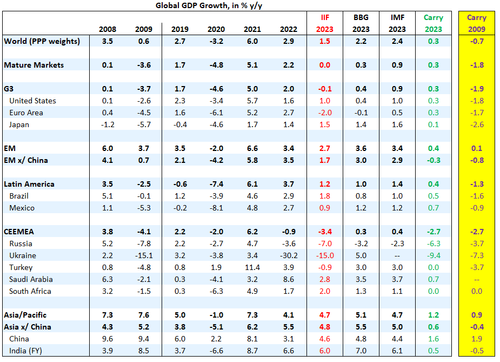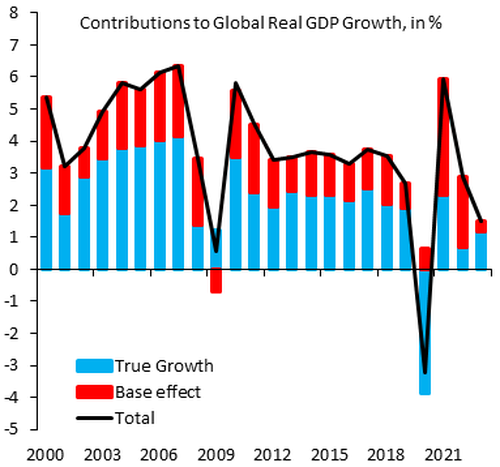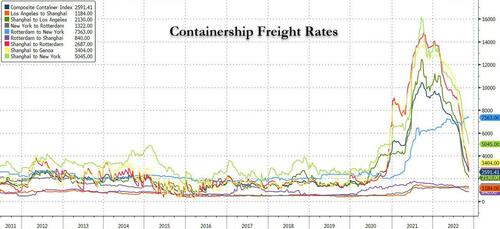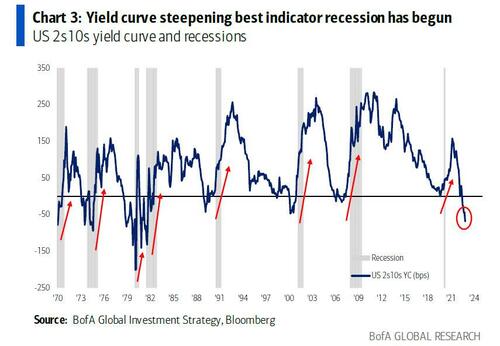"2023 Will Be Bad": Global Growth Set For Weakest Level Since 2009
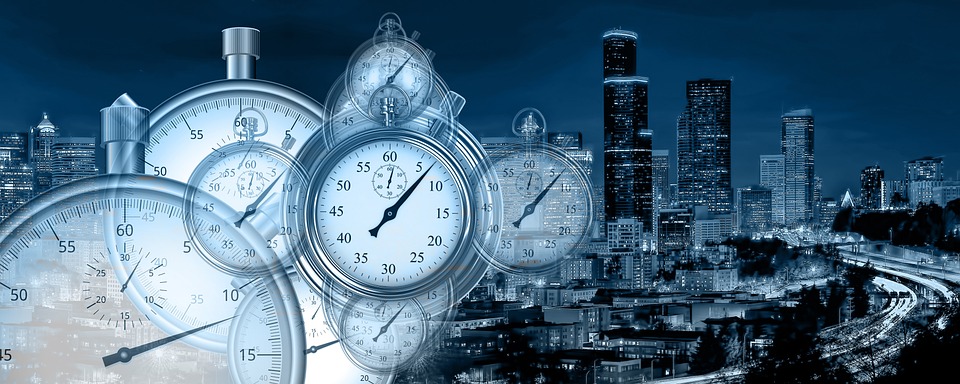
Image Source: Pixabay
As global central banks aggressively hike interest rates in response to inflation, the world faces a recession in 2023, as well as what could be financial crises in emerging markets and developing economies.
Institute of International Finance's chief economist Robin Brooks tweeted a "global recession in 2023" is the best case. He said, "Adjusted for base effects - likely around +0.3% next year (green) - global growth will be only +1.3%. That's as weak as 2009, when headline growth was lower (+0.6%), but carryover was -0.7% (yellow)."
Brooks warned another "Great Recession" is ahead, adding "2023 will be bad."
"The severity of the coming hit to global GDP depends principally on the trajectory of the war in Ukraine," Brooks and Jonathan Fortun wrote in a note Thursday, obtained by Bloomberg. The analysts expect the global downturn would be led by Europe, which is the most impacted by the war in Ukraine.
They said the most significant driver for the global economy next year would be China, where everything depends on Beijing loosening COVID-19 restrictions.
We must note central banks aggressively raising interest rates this year will weigh on global GDP next year because of the 9-12 month lag in monetary policy filtering into the real economy.
One of the biggest signs global growth is slowing sharply has been crashing container rates.
Separately, Standard Chartered Bank's chief strategist, Eric Robertsen, told Shanghai-based Yicai Global that a global recession is expected in the first half of 2023.
Perhaps one of the best ways to trade the global turmoil was recently outlined by BofA CIO Michael Hartnett's latest Flow Show note, where he said, "If the bond market can't bid with forward-looking data this weak, we are about to enter whole new world of deflationary pain."
But if inflation was the 2022 story, then 2023 is all about a recession. Hartnett said to buy bonds in H1'23 and stocks in the second half.
One helpful insight from Hartnett: the US 2s10s yield curve is most inverted since February 1982; inversion is the best lead indicator of recession past 50 years, but steepening is the best indicator that a recession has begun and a "pivot" is imminent.
And if the Fed and other central banks continue hiking, they will have an economic death wish next year as the global economy decelerates. JPMorgan recently made a recession its 2023 base case, after all.
More By This Author:
China Cuts Reserve Requirement Ratio By 25bps, Boosts Economy With $70BN In Fresh LiquidityFord Recalls 519,000 Broncos And Escapes Over Cracked Fuel Injectors Sparking Engine Fires
"Retail Hasn't Sold": Despite Crypto Crash, Bitcoin HODLing Hits A Record
Disclosure: Copyright ©2009-2022 ZeroHedge.com/ABC Media, LTD; All Rights Reserved. Zero Hedge is intended for Mature Audiences. Familiarize yourself with our legal and use policies every time ...
more
